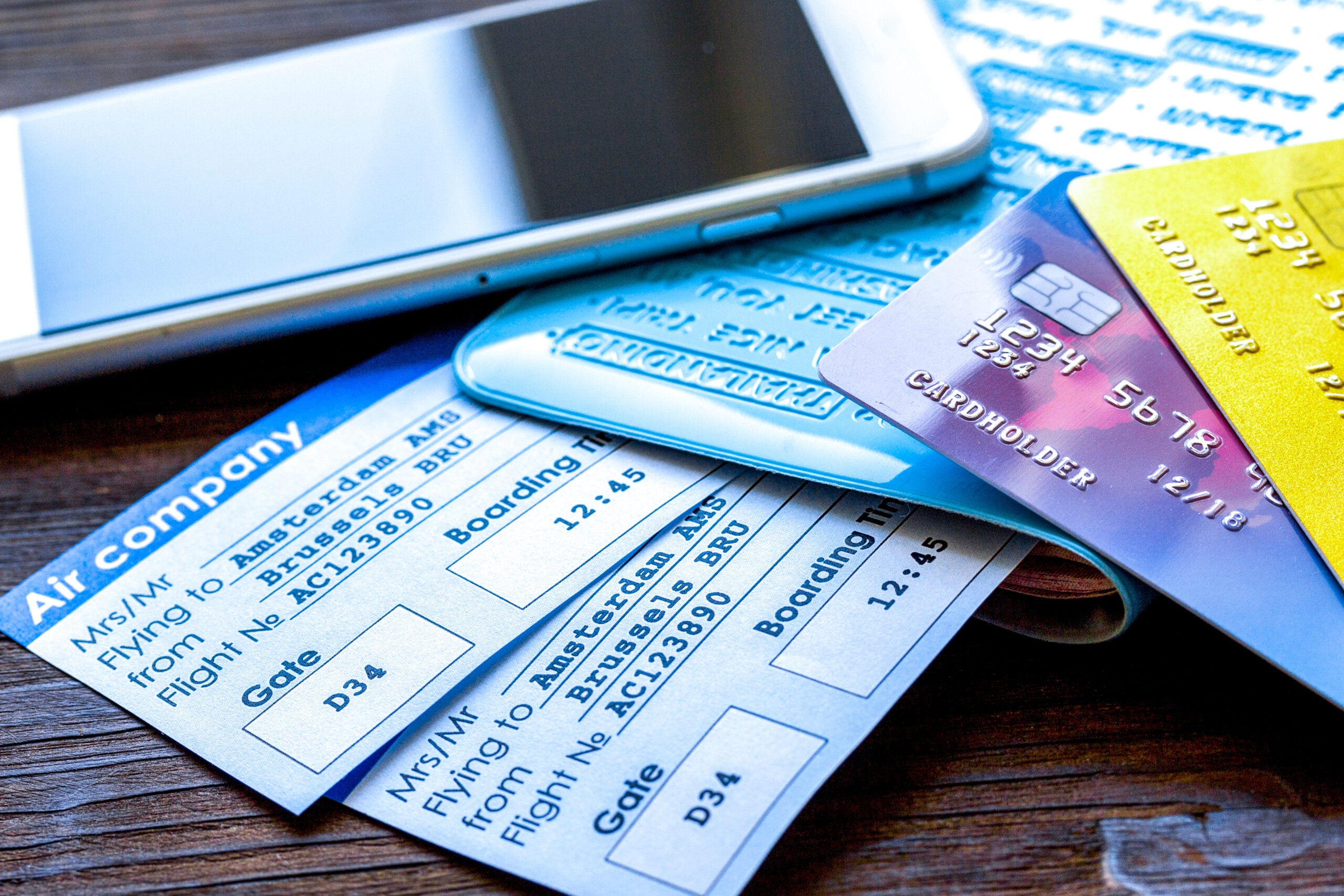
Airline passengers want a seamless purchase experience and will walk away should an airline fail to meet expectations – 10% of those that abandon a travel transaction state problems with payment as the cause.
Serving customers’ payment needs adds further costs and challenges to the complexity of airline operations. However, CellPoint Digital – a global leader in payment orchestration – is helping airlines to optimise their payment process, driving down costs and boosting conversions.

Discover B2B Marketing That Performs
Combine business intelligence and editorial excellence to reach engaged professionals across 36 leading media platforms.
Airport Technology spoke to Kristian Gjerding, CEO of CellPoint Digital, to find out where the payment landscape is heading, what airlines can do to keep up with the change, and how its payment orchestration platform can help.

Luke Christou: How is the payment landscape changing?
Kristian Gjerding: The payment landscape is moving really, really fast for a number of reasons. I will say, with the slowdown in the economy – and no doubt fintech has been hit the hardest, it seems – we are seeing a slowdown in general terms. However, the pace of change is still there and what would usually take five to eight years is now taking two.
There’s a lot of innovation going on and a lot of areas that still need innovating. There’s a lot of agility in fintech in improving broken systems, user journeys, and disconnected environments, which is important as merchants are realising that payments are a revenue multiplier. If you do it badly, it’s going to cost you a lot of opportunities and income and if you do it well it will generate a very positive contribution to your bottom line.
We’re seeing innovation happening across a multitude of different areas, both in the types of payment and the way banks are operating with new banking and open banking. We’re seeing cryptocurrencies coming in, we’re seeing many alternative forms of payments. We’re seeing a whole range of capabilities and a lot of interesting changes.

US Tariffs are shifting - will you react or anticipate?
Don’t let policy changes catch you off guard. Stay proactive with real-time data and expert analysis.
By GlobalDataHow is CellPoint Digital helping airlines to navigate the changing payment landscape?
We’re a fintech company focused on what we call payment orchestration, which is really managing the financial supply chain for our travel merchants.
With a single connection to us, we give the merchant full control over their payment ecosystem. The airline can manage all aspects of the financial supply chain, from deploying payment methods into their digital sales channels – whether that be mobile, wearable, or anything you can imagine – all the way to reconciliation from multiple different sources of payment on a global basis, or at least a large regional basis. It combines all the components that sit within optimising your payment ecosystem.
We really help our merchants in three areas with this solution. We give them the ability to increase their conversion rates by getting more payments completed; we give them strategic flexibility, which is really about ease of use – managing the ecosystem and doing more with less; and finally, we help them with savings on their payment costs.
We’re seeing an average between 6%-11% return of flow. If you’re an airline and we have a billion dollars of flow going through our platform, we deliver somewhere between $60m-$120m worth of return on that flow in positive contributions to your bottom line.
Why should payment orchestration be on airlines’ radars?
Payments are becoming a revenue multiplier and I think merchants, particularly airlines, are realising that it contains tremendous opportunities to generate what we call bottom-line contributing services.
Payment orchestration is really the next level where we progress from gateway acquirers to full-service PSPs [payment service providers], and where we really give merchants complete control of the ecosystem.
It’s all about conversion increases, strategic improvements or advantages, and cost reductions. Airlines should look at this as something that their digital and revenue teams can deploy to increase their conversion rate across the board, and I think that’s very important.
Are airlines keeping up with the pace in the payments market?
I think airlines are responding really well at the moment. We’re seeing a tremendous uptake in business from airlines. We’re seeing our volumes of flow increasing significantly, due to travel coming back but also due to airlines wanting to change. They saw the consequences of having inflexible systems during the pandemic and they know if they want to capture the market, they have a lot to do.
One of the areas where airlines most certainly need to upgrade is on their payment capabilities. For them, payment orchestration is particularly useful because airlines have very complex systems and lots of legislation. They want to reduce the burden on them from a cost perspective, but also from a complexity perspective. And then they need to do more with fewer people – It’s not like they can just throw bodies at problems. They need to fix them in a smart way that enables them to do more.
Being either regional or global players, they have multi-acquirer setups, sophisticated and complex products, and a specific need for back-office improvements. Servicing customers, either in different parts of a particular region or globally, requires a lot of adaptation to local needs and desires, so they need to serve a lot of different payment methods.
They also need to reconcile all these payment transactions coming in, they need to increase the acceptance rate. So there are a lot of areas where payment orchestration dramatically supports the transition into a more digitised reality.
Is it important that airlines provide a diverse range of payment options?
If you’re an airline and you don’t, you’re going to lose out massively because there are a lot of people who prefer to pay with alternative forms of payment. Buy Now Pay Later and similar types of financial instruments are essential in their ability to convert. Methods like split payment, where a traveller can pay with more than one card, are also essential. Plus, you need options that are adapted to a particular market, because it’s not the same alternative forms of payment everywhere.
Merchants need to have flexibility in their forms of payment and they need to have complete control over them. They need to be able to deploy and retract them literally with the click of a button, which is one of the things that payment orchestration does.
Will cryptocurrency play a role in the future of airline payments?
We’re not seeing a lot of demand for cryptocurrencies yet in the airline space. That doesn’t mean that it doesn’t have legs on it. I do think you will see future generations that desire those types of currencies because it does hold a lot of advantages in certain situations.
If we take the next generation, they’re using NFTs already in the gaming environment, and remember some of these people are 14, 15, or 16 years old. In a few years, they’re going to become buyers of airline tickets and airline inventory, and they’ll be used to transacting in those environments so that is something they will eventually root for.
At this present moment, there is a lot of volatility in cryptocurrencies. There are a lot of challenges around it. We’re seeing cryptocurrencies under pressure and they have lost a lot of value. This illustrates that there needs to be less volatility if these currencies are coming into play because otherwise airlines suddenly become inventors instead of operating airlines, which is dangerous.
So I think we need to see some level of calming in those areas, but as a form of payment, cryptocurrencies will most certainly make an impact as we progress over the next three to five years.
How is CellPoint Digital helping airlines to handle the growing number of payment options?
We have a very large eco-system of alternative forms of payments, acquirers, gateways and other things that are readily available for our airline merchants. They have access to our console, so they don’t have to have their own environment, where they can configure and deploy forms of payment for different markets based on a whole set of rules.
They can say ‘for a particular market, I want to display these forms of payment. For other markets, I would prefer these’. It really provides a sophisticated and optimised way of offering alternative forms of payment based on a whole set of rules: geography, amounts, and time of day.
And it makes it really easy for them to manage it, and then report back so they can see how they’re converting and how things are progressing. There’s an analytics platform built in, so you get access to real-time data, or you can go back and search historical data.





